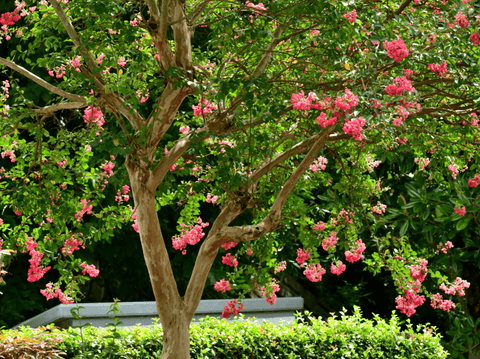Why Roses Are Worth the Effort
Roses are classic—fragrant, beautiful, and capable of adding charm and elegance to any garden or landscape. With the right care, they’ll reward you with lush blooms, repeat flowering, and sometimes wonderful fragrance. Since rose bushes come in many types (shrub, climbing, tree form), there is one for nearly every garden style.
Gardeners commonly search for helpful rose‑topics like:
- How to plant roses the right way
- Best fertilizing schedule for roses
- Pruning roses for continuous blooms
- Disease prevention (fungus, black spot, powdery mildew)
- Winter protection in cooler zones
Top Rose Varieties from Simply Trees
Here are some of the rose bushes & rose trees we carry. These are great examples to reference as you plan your planting.
- Double Knock Out® Rose Tree — A tree form with red double‑petal blooms, strong disease resistance, full sun lover. Great for focal points or patio accents.
- Yellow Lady Banks Climbing Rose — Vigorous climber with fragrant yellow blooms, ideal for trellis or fence lines.
- Double Knock Out® Rose Bush — Shrub form, similar bloom qualities to the tree version but more compact.
- Pink Double Knock Out® Rose Tree — Tree standard in a lovely pink; same disease resistance and bloom reliability.
- Orange Glow™ Knock Out® Rose Tree — Bold orange blooms; tree‑form adds height and drama.
- White Drift Rose Tree — Smaller tree form, delicate blooms; good for smaller spaces or soft color palettes.
And more are available in our Roses collection.
How to Choose the Right Location & Soil
- Sunlight: Roses generally need at least six hours of direct sunlight per day. Morning sun with afternoon protection is ideal in very hot climates.
- Soil: A well‑draining soil is essential. Roses dislike “wet feet.” Loamy soil enriched with compost or organic matter (like leaf mold or well‑aged manure) works best.
- pH: Slightly acidic soil (pH 6.0‑6.5) is often ideal. Some rose varieties might tolerate a bit more neutral soils.
- Drainage: If your garden has heavy clay or tends to retain water, raise the bed or improve drainage by adding coarse materials under the planting area.
Planting Roses: Step‑by‑Step
- Timing: Plant roses in early spring after frost has passed, or in fall if your zone allows.
- Prepare the hole: Dig a hole wide and deep enough so that the root ball sits slightly below or at the soil surface level, allowing root flare visible just above soil.
- Amend soil: Mix in compost or organic matter; avoid over‑amending with high nitrogen that encourages foliage at expense of blooms.
- Planting depth: If the rose is grafted, place the graft union slightly above ground in mild climates; slightly below ground in cold climates for protection.
- Backfill & water in: Fill with soil mix, tamp down gently to remove large air pockets, then water deeply until water drains out bottom. Add mulch around the base (but not touching stem) to retain moisture.
Watering, Fertilizing & Pruning
- Watering: Newly planted roses need consistent moisture. Water deeply once or twice a week (depending on weather) so that water reaches deep into root zone. Established roses need less frequent but thorough watering. Avoid overhead watering in the evening to help prevent fungal diseases.
- Fertilizing: Use a balanced rose fertilizer in early spring. Repeat feeding every 4‑6 weeks through the growing season, stopping in late summer to allow plants to harden off before winter (in colder climates). Organic options (compost, bone meal, fish emulsion) also work well.
- Pruning:
- Late winter or very early spring is best (before buds break).
- Remove dead, diseased, or crossing branches.
- Deadhead spent blooms to encourage rebloom.
- For tree roses, maintain a good structure—prune to maintain single trunk/standard form if that’s how it’s trained.
- Monitoring & Disease Prevention: Frequent lookouts for black spot, powdery mildew, rust. Good airflow (space between plants), proper watering practices, and fungicide treatments as needed help keep problems under control.
Winter & Seasonal Care
- Mulch: Apply a thicker layer of mulch in fall to protect roots from freeze/thaw cycles.
- Prune lightly in fall: Remove only dead or severely diseased wood; heavy pruning is best left to late winter/early spring.
- Protection: In cold climates, consider wrapping or using rose cones (if appropriate) to protect against extreme freeze.
- Feed in off‑season: Some rose gardeners apply a light layer of compost or organic fertilizer in late fall or early spring to boost soil health.
Troubleshooting Common Rose Issues
Problem: Few or no blooms
Likely Cause: Not enough sun or too much nitrogen
Solution: Move the rose to a sunnier location; avoid over-fertilizing with nitrogen-heavy formulas
Problem: Yellowing leaves
Likely Cause: Overwatering, poor drainage, or nutrient deficiency
Solution: Check soil drainage, cut back on watering, and consider adding compost or balanced fertilizer
Problem: Black spots or fungus
Likely Cause: Poor air circulation and overhead watering
Solution: Space roses out for airflow, water at the base, and apply fungicide if needed
Problem: Pests (aphids, spider mites, Japanese beetles)
Likely Cause: Plant stress or soft new growth
Solution: Spray with insecticidal soap, introduce beneficial insects, or prune lightly to strengthen growth
The Simply Trees Rose Garden Promise
When you order from Simply Trees:
- Your rose is container‑grown and shipped healthy and robust.
- You get a one‑year guarantee on live plant arrival and survival.
- Our roses are selected for disease resistance, heat tolerance, and vibrant bloom cycles.
- Our containers & shipping are designed to minimize transplant shock.
If you’re ready, pick a rose (or two or three), follow these care steps, and you’ll have a bloom‑filled garden season after season.


